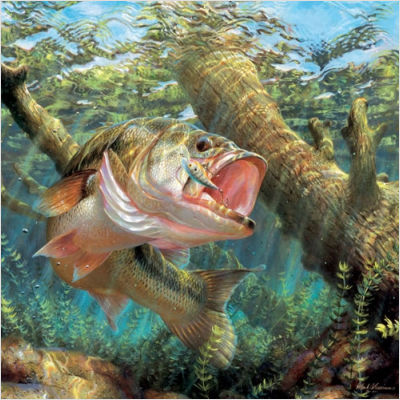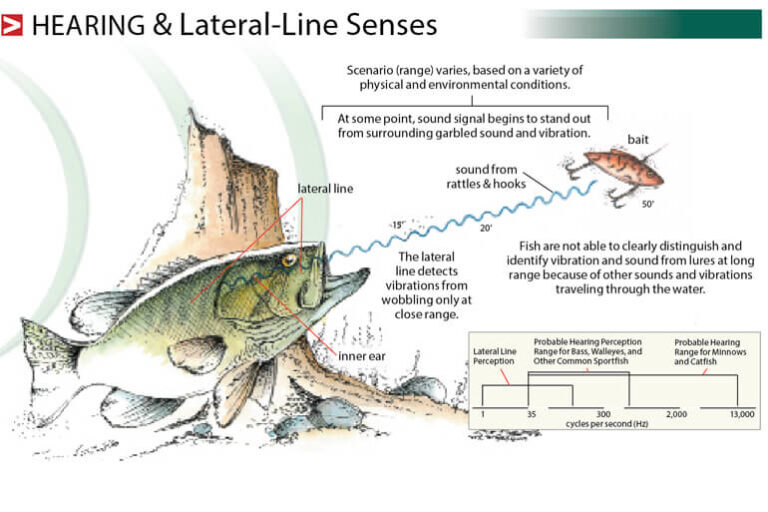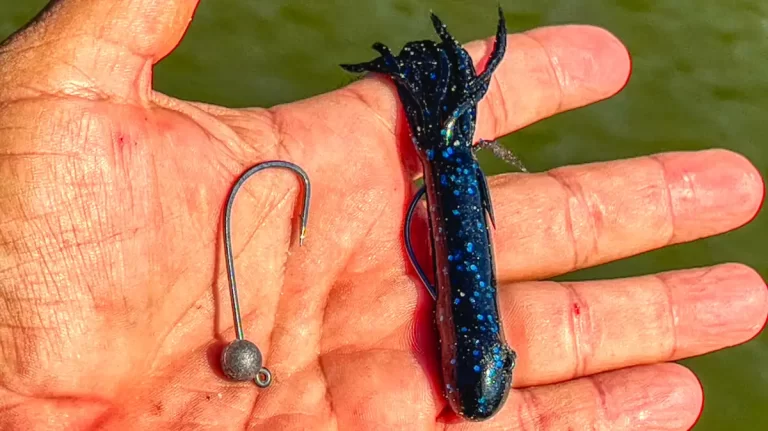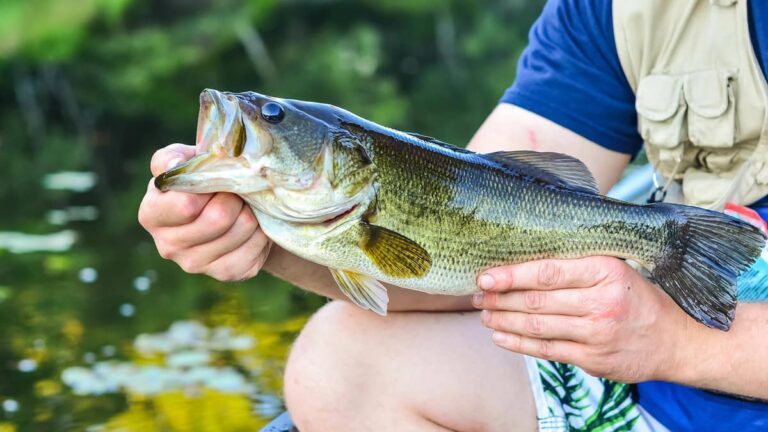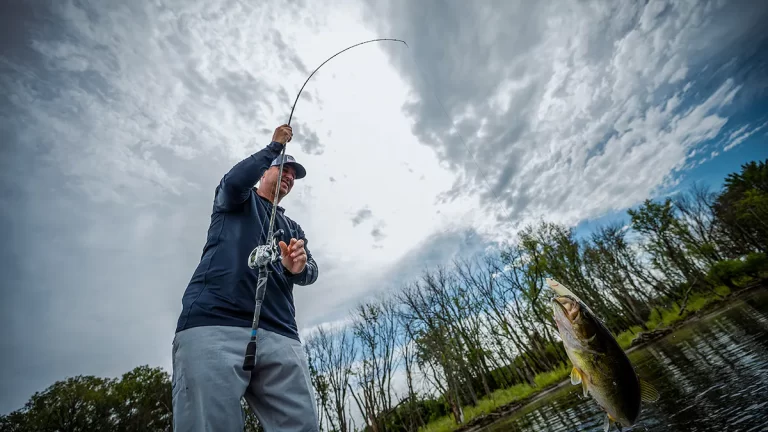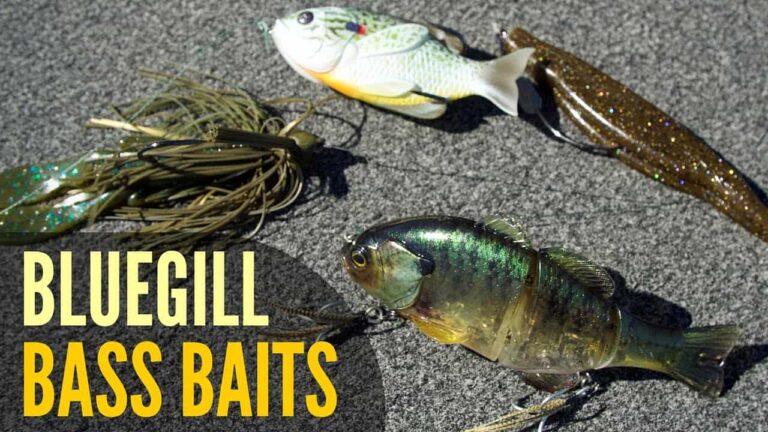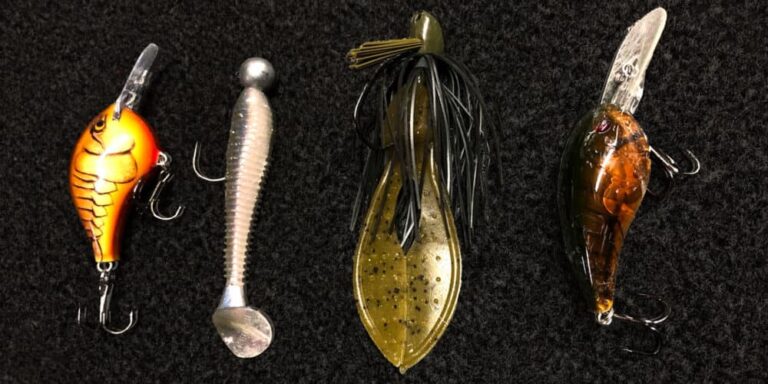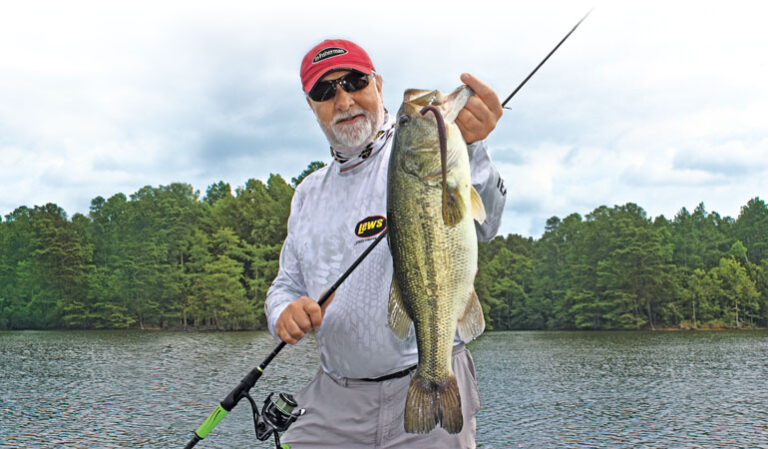Do Bass Bite at Night? Keys to Bass Fishing at Night
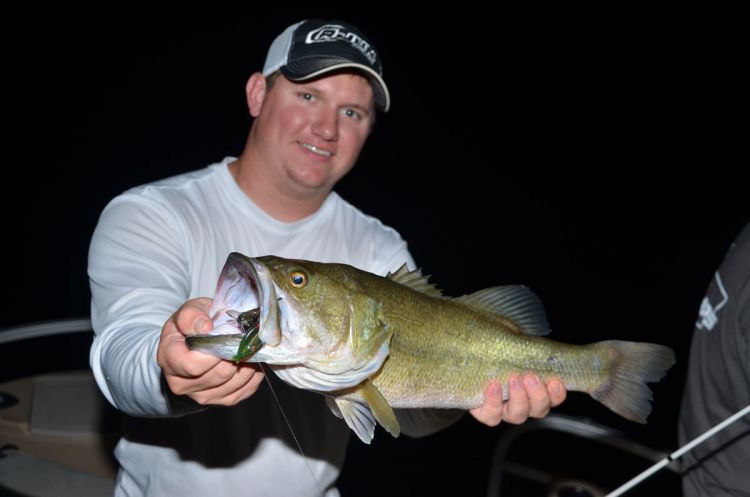
Night time bass fishing isn’t as popular, but if you prefer the peace and tranquility of the later hours I can’t blame you.
Do bass bite at night? Bass pretty much feed around the clock, you just need to know how to catch them
Do Bass Bite at Night?
Yes, bass do bite at night. Bass are known to be more active during low-light conditions, and they use their heightened senses to hunt for prey in the dark.
Night fishing can be rewarding, but anglers should adjust their techniques and use lures suitable for attracting bass in low-light situations, or else it can be one of the worst times of day to go fishing.
Nocturnal Nature of Bass
As the sun sets and darkness takes over, these remarkable fish come to life, displaying heightened activity and hunting prowess under the cover of night.
Their visual adaptation to low-light conditions and the allure of ambushing prey in the dark make bass the perfect candidates for thrilling night fishing adventures.
This is especially true during the hot summer months. When the bright summer sun gets too hot, bass become lethargic and tend so stay in deeper, cooler waters.
Bass’s Use of their Lateral Line
The lateral line is a remarkable sensory system found in bass and many other fish species that serves as their secret weapon to locate prey, especially in low-light conditions.
This sensory system consists of a series of fluid-filled canals running along the sides of the fish’s body.
When bass are submerged in water, any movement or vibration in the surrounding environment creates ripples and disturbances in the water.
These vibrations travel through the water and are detected by the lateral line’s sensitive receptors, known as neuromasts, located within the canals.
The lateral line allows bass to perceive changes in water pressure, temperature, and movement around them.
By interpreting these subtle vibrations, bass can identify the presence and location of potential prey nearby, even when visibility is limited during nighttime or in murky waters.
This remarkable sense provides bass with a significant advantage, as it enables them to detect the faintest movements made by unsuspecting prey, such as minnows, insects, or other small aquatic creatures.
Once the lateral line signals the presence of prey, bass can swiftly maneuver towards their target and launch a precise strike.
Hunting Strategies of Bass During the Night
Under the moon’s soft glow, bass employ a repertoire of cunning hunting strategies, turning the darkness into their ally.
Stealthy and patient, these nocturnal predators capitalize on the reduced visibility to surprise their prey.
With remarkable ambush capabilities and heightened senses, they exploit the cover of darkness to target unsuspecting victims.
Whether they’re lurking near submerged structures or prowling the shallows, the hunting strategies of bass at night offer a fascinating glimpse into the world of underwater predators.
For anglers, mastering these tactics can lead to unforgettable nighttime fishing experiences and impressive catches under the stars.
Moon Phase Effect on Bass Behavior
Moonlight plays a pivotal role in shaping the behavior of bass during the night. As the moon rises, it illuminates the water, providing bass with better visibility.
This increased light allows them to venture out from their hiding spots and actively hunt for prey.
Additionally, moonlight triggers a rise in plankton and other small organisms, attracting baitfish, which in turn draws the attention of bass.
Understanding the influence of moonlight on bass activity is crucial for anglers seeking to optimize their chances of a successful night fishing expedition.
Effect of Each Moon Phase
The various phases of the moon have distinct effects on bass feeding behavior. During the full moon, bass tend to feed more actively throughout the night.
The brighter light allows them to hunt with greater efficiency, making it an excellent time for anglers to target these voracious fish.
On the other hand, during the new moon when the night sky is darker, bass might be less aggressive in their feeding patterns.
As the moon transitions through its phases, there are intermediate stages that also influence bass behavior.
Understanding the interplay between moon phases and feeding behavior is crucial for anglers to adapt their strategies and make the most of their night fishing endeavors.
Tips for Nighttime Bass Fishing
- Use Sensitive Rods and Line: Nighttime bass bites can be subtle, so use sensitive rods that can detect even the slightest movement. Pair them with a low-stretch fishing line to feel bites more effectively and increase your hook-up rate.
- Employ Noisy Topwater Baits: Topwater lures with noisy attributes like buzzbaits, poppers, or frogs are effective for drawing bass to the surface during the night. The commotion created by these lures helps bass locate and strike in the dark.
- Try Slow and Steady Retrieves: As bass rely more on their lateral line to detect prey at night, using slow and steady retrieves with soft plastic lures can be highly effective. Experiment with various colors to find the most enticing one for the conditions.
- Embrace Dark-Colored Lures: Dark-colored lures, such as black, blue, or purple, can create better silhouettes against the night sky and mimic natural prey. Consider using these colors to increase your chances of attracting bass.
- Pay Attention to Moon Phases: Full moon nights often offer better visibility, making it easier for bass to locate prey. Plan your night fishing trips around moon phases to maximize your success.
- Consider Glow in the Dark Rods: These glowing rods can make fishing a bit easier by giving you more visibility around yourself. These rods also look super cool and can elevate the fishing experience.
Best Lures When Bass Fishing at Night
When it comes to nighttime bass fishing, selecting the right lures can make all the difference in enticing those elusive predators to strike.
Here are some of the best lures that have proven to be effective in the dark:
Topwater Lures
Nocturnal bass are highly responsive to topwater lures that create noise and disturbance on the water’s surface.
Buzzbaits, poppers, and noisy frogs are excellent choices as they mimic injured or struggling prey, attracting bass with their splashes and commotion.
Spinnerbaits
Spinnerbaits with large blades that produce vibrations and flash can be highly effective at attracting bass in the dark. Retrieve them at a steady pace to generate enticing movements that bass cannot resist.
Crankbaits
Although less commonly used for night fishing, shallow-running crankbaits with rattles can still attract bass. Use them in areas with relatively open water and minimal snag potential.
Large Profile Baits
Bass can become opportunistic at night and may target larger prey. Consider using oversized lures like big worms, bulky creature baits, or massive swimbaits to trigger those aggressive nighttime strikes.
Reeling this In
As we conclude our nighttime bass fishing adventure, remember the thrill of hooking elusive bass under the moonlit sky.
Safety comes first, so gear up properly and choose the right lures like topwater baits for maximum effect.
Embrace the challenge, savor the tranquility, and create unforgettable memories while waiting for that exciting tug on your line in the darkness.
Get ready for your nocturnal bass fishing escapades under the stars, and enjoy the magic of the night! Happy fishing and tight lines!
